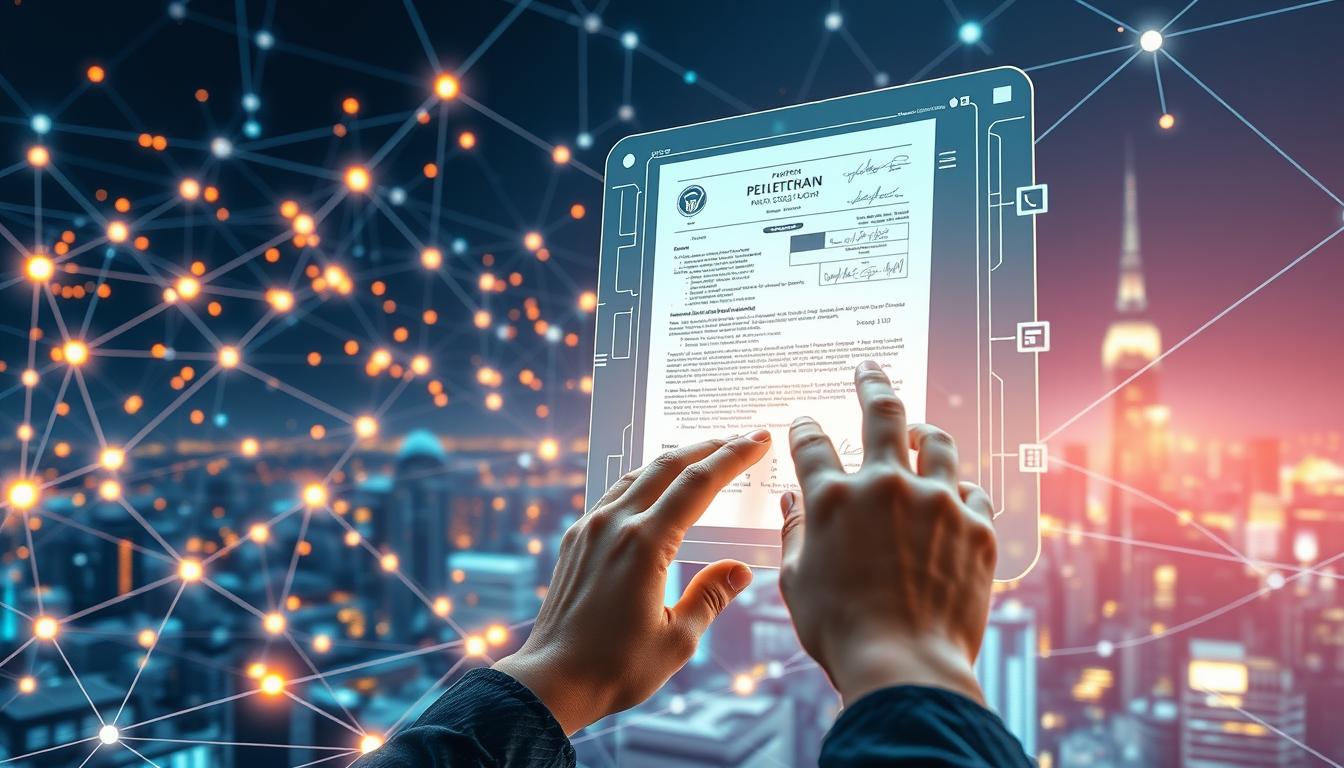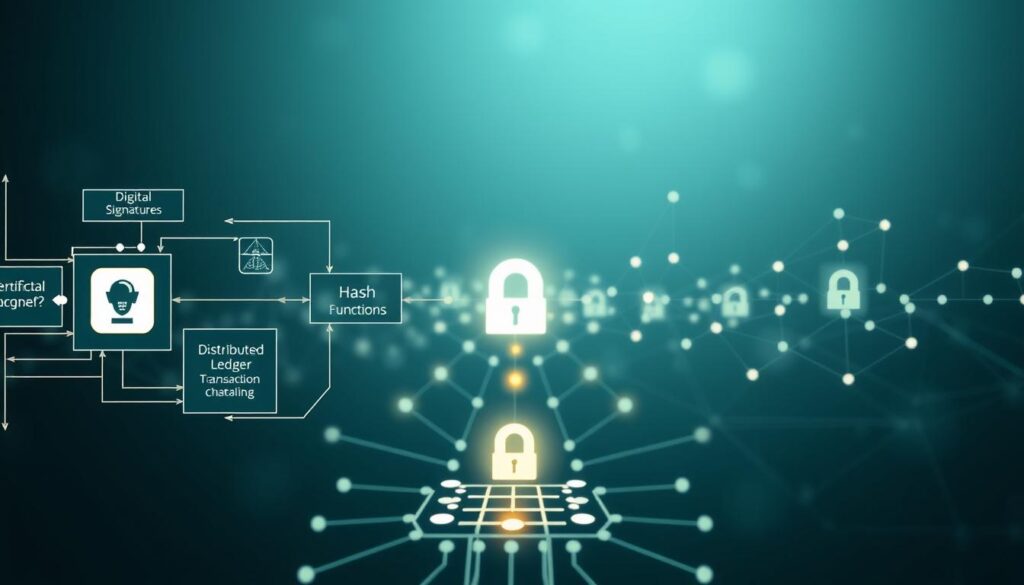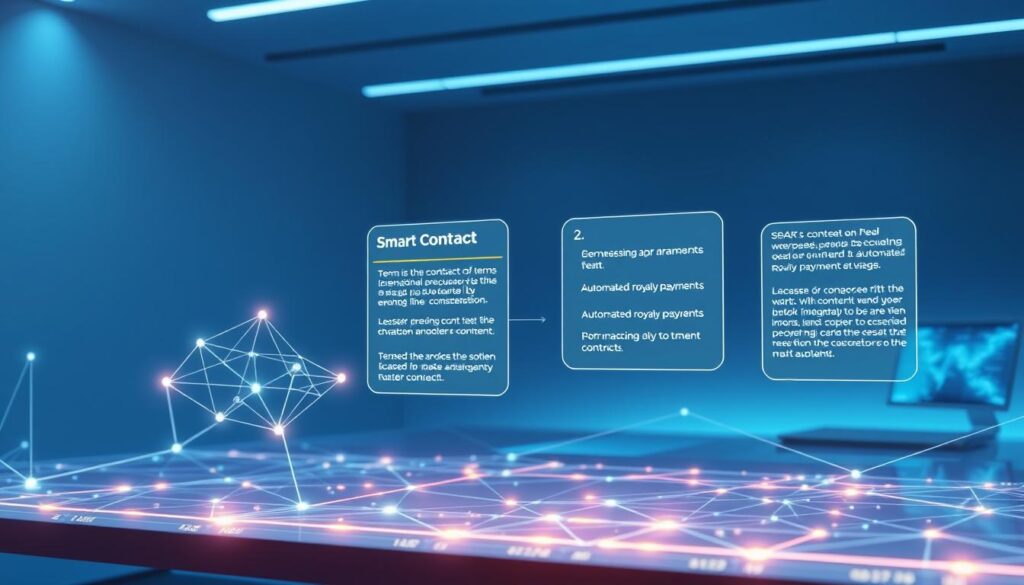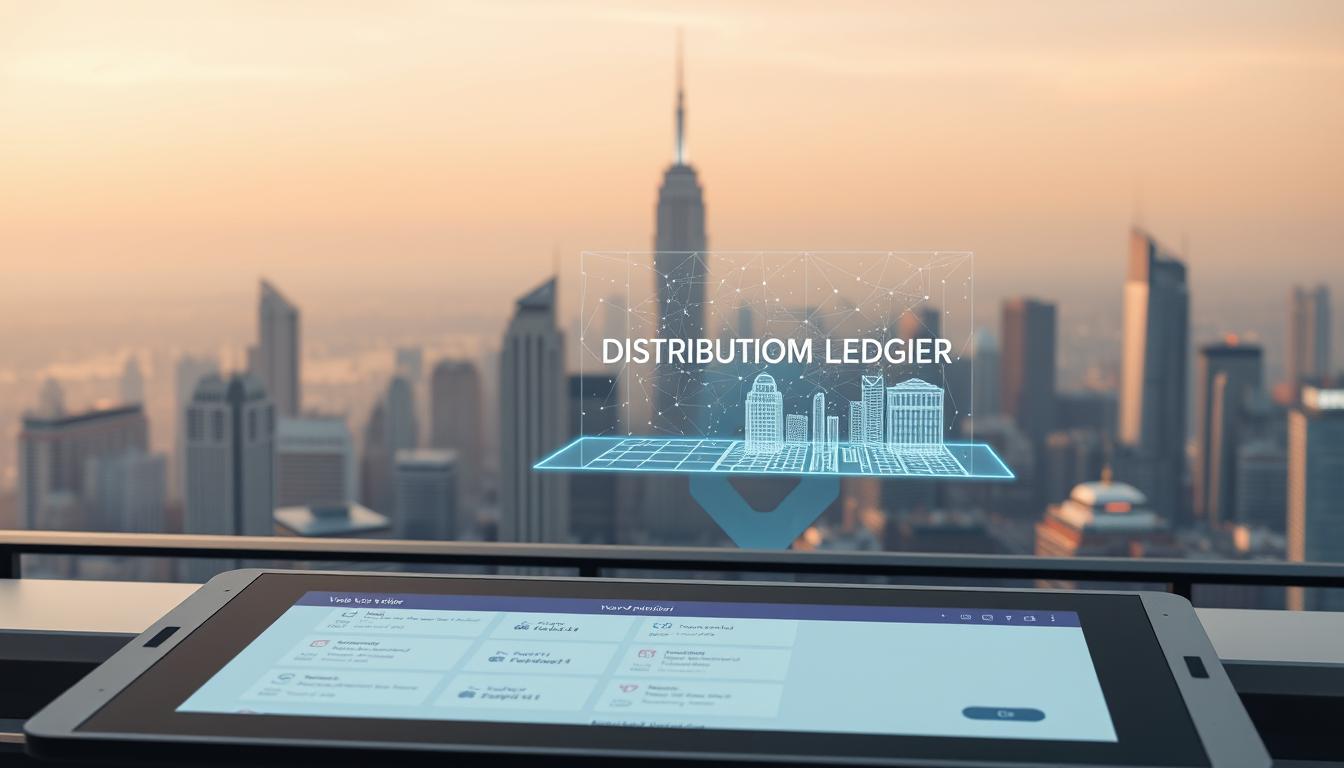Now Reading: Understanding Blockchain Intellectual Property Rights Management
- 01
Understanding Blockchain Intellectual Property Rights Management
Understanding Blockchain Intellectual Property Rights Management

Creators and innovators face a tough challenge today. Protecting their original work in the digital age is harder than ever. Digital content can be copied and shared across the globe in seconds.
This widespread issue has a massive cost. The Global Innovation Policy Center reports that theft of creative assets costs the U.S. economy up to $600 billion every year. There is a clear and urgent need for better protection solutions.
New technology offers a powerful answer. Its decentralized and transparent nature creates a permanent, unchangeable record. This allows for easy verification of when a work was created and who owns it.
This system lets inventors turn trademarks or patents into unique digital assets. These tokens make it simple to track usage and stop unauthorized copying. It represents a major step forward in how we safeguard valuable ideas.
Key Takeaways
- Protecting creative works is increasingly difficult in our connected digital world.
- Theft of innovative assets costs the U.S. economy hundreds of billions of dollars annually.
- New decentralized technology provides a transparent and permanent record of ownership.
- This system helps verify the origin and authenticity of creative works.
- Traditional assets like patents can be converted into trackable digital tokens.
- This approach enhances the ability to monitor and protect against unauthorized use.
Introduction and Overview
The internet era brought unprecedented access to creative content but also created new vulnerabilities. Digital platforms enable instant sharing across global networks, making enforcement difficult.
This section explores the evolving digital environment where original works face constant threats. We’ll examine how technology changed content distribution and protection needs.
Background and Digital Landscape
Digital technology revolutionized how we create and share artistic works. The same tools that enable global distribution also facilitate unauthorized copying.
Statistics reveal the scale of this challenge. Game of Thrones experienced nearly one billion illegal downloads in 2016 alone. This demonstrates how easily digital content can be exploited.
| Content Type | Common Challenges | Financial Impact |
|---|---|---|
| Music | Unauthorized streaming and downloads | Artists lose royalty income |
| Written Works | E-book piracy and illegal sharing | Authors face reduced sales |
| Visual Art | Digital reproduction without credit | Designers miss compensation |
| Video Content | Illegal distribution platforms | Production costs unrecovered |
Importance for Creators and Innovators
Effective protection directly impacts creative motivation. When artists cannot secure their work, innovation suffers. Financial losses represent only part of the problem.
Traditional copyright methods struggle with real-time global enforcement. New solutions must address these technological gaps to support continued artistic expression.
The Role of Blockchain Technology in Intellectual Property Protection
Modern creators require advanced tools to protect their valuable innovations. This technology offers powerful features that address critical challenges in digital asset security.

Decentralization and Immutable Records
The distributed nature of this system stores data across multiple locations. This approach eliminates single points of failure that hackers often target.
Each piece of information connects cryptographically to the previous entry. This creates a chain that cannot be altered without detection. The permanent nature of these records provides strong security for creative works.
Timestamping for Proof of Ownership
Digital timestamps serve as undeniable evidence of when content was created. This feature helps resolve disputes about who originated a work first.
A French court recently accepted a blockchain timestamp as valid proof in a copyright case. The technology provided clear evidence of authorship date during infringement analysis. This legal recognition demonstrates the system’s growing credibility.
| Feature | Traditional Systems | Blockchain Approach |
|---|---|---|
| Data Storage | Centralized databases | Distributed across network |
| Record Alteration | Possible with admin access | Nearly impossible |
| Verification Process | Manual and time-consuming | Instant and automated |
| Legal Acceptance | Well-established | Growing recognition |
These technological advantages provide verifiable proof of ownership that traditional systems cannot match. The combination of decentralization and permanent timestamps creates a robust framework for intellectual property protection.
Blockchain Intellectual Property Rights Management: Key Concepts
A new framework for safeguarding innovations relies on transparent and unchangeable digital records. These core ideas form the foundation of a modern approach to protecting valuable creations.

Core Mechanisms in IP Verification
Permanent timestamps act as a powerful tool for proving when a logo, design, or invention first existed. This creates an undeniable record of origin.
Tracking the history of an asset becomes clear and simple. Every change in ownership is visible on the shared ledger. This transparency is vital for business deals like mergers.
Traditional systems depend on a central authority. The new model distributes control across a network. This removes middlemen and gives power back to creators.
Specialized marketplaces can be built on this technology. They offer secure places to register, exchange, and pay for digital assets. All transactions are visible to approved participants, building trust.
- Unalterable Proof: Timestamps provide permanent evidence of creation.
- Transparent History: The complete lifecycle of an asset is tracked.
- Distributed Control: No single entity holds all the power.
- Unified Platforms: Marketplaces combine registries, exchanges, and payments.
Smart Contracts and Licensing Automation
Self-executing digital agreements are transforming the landscape of content licensing and royalty distribution. These automated contracts operate as computer programs that execute terms automatically when specific conditions are met.

Automated License Execution
Smart contracts revolutionize how permissions are granted for creative works. When someone wants to use protected content, the system can automatically grant access once payment is confirmed.
This eliminates manual paperwork and reduces administrative delays. The technology ensures instant enforcement of licensing terms without human intervention.
Streamlined Royalty Distribution
Royalty payments become immediate and transparent with automated systems. Every time protected content is used, the smart contract calculates and distributes compensation automatically.
This approach eliminates disputes over usage tracking and ensures creators receive fair payments promptly. The blockchain infrastructure provides a trustworthy record of all transactions.
These automated smart contracts represent a significant advancement in managing creative assets. They bring efficiency and fairness to the entire licensing process.
Real-World Applications and Use Cases
The theoretical potential of blockchain for intellectual property protection has become tangible reality through several working platforms. These systems demonstrate practical solutions across creative industries.

Blockai helps writers and artists document new work creation. The platform leverages timestamps to establish proof against copyright infringement. This provides creators with undeniable evidence of their work’s origin.
Platform Examples: Blockai and Verisart
Verisart offers tamper-proof digital certificates for artists and brands. The technology allows conversion of physical and digital works into NFTs. This simplifies authenticity verification for collectors and buyers.
Bernstein’s certified version history creates comprehensive digital trails. Any digital asset can be registered online with proof of existence. The system tracks ownership and development timelines in real-time.
Innovative IP Tracking Systems
Additional platforms address specific industry needs. Everledger authenticates high-value items while Ascribe secures copyright claims. Mycelia manages music rights and automates royalty distribution.
KodakOne protects photographers’ copyrights by tracking image usage. These diverse applications show blockchain’s versatility in protecting creative property. The technology provides concrete solutions that creators can implement today.
Overcoming Implementation Challenges
Implementing new systems for protecting creative assets presents several significant hurdles. These obstacles range from unclear legal frameworks to complex technical integration issues.
Legal Uncertainty and Regulatory Hurdles
The legal status of this new technology remains uncertain in many regions. The absence of a central authority creates questions about legal responsibility.
This is a major challenge for widespread adoption. Disputes involving records across different jurisdictions complicate oversight. Regulators are still working to understand how to address decentralization.
Technical Integration and Interoperability
Another set of challenges involves technical integration. Companies find it difficult to connect new systems with existing databases.
This process requires specific resources and technical expertise. The lack of universal standards across different platforms creates hesitation.
The table below compares traditional and modern system integration issues.
| Aspect | Traditional Systems | Modern Decentralized Systems |
|---|---|---|
| Data Sharing | Controlled within a single system | Requires interoperability between networks |
| Expertise Needed | Established IT skills | Specialized technical knowledge |
| Initial Setup | Relatively straightforward | Complex migration planning |
| Industry Standards | Well-defined and mature | Evolving and fragmented |
Overcoming these challenges is crucial for broader adoption. It requires collaboration on standards and clearer regulatory guidance.
Innovative Approaches to IP Dispute Resolution
Traditional legal systems often struggle with the speed and complexity of modern copyright disputes. New technologies offer fresh solutions that can streamline the entire process.
Transparent Dispute Logs and Jurisdictional Solutions
The technology creates comprehensive audit trails that document every interaction with creative assets. This eliminates the “he said, she said” nature of many ownership conflicts.
Independent arbitrators can assess evidence recorded on the distributed ledger. This creates a more efficient dispute resolution process without relying solely on traditional courts.
Automated monitoring systems track registered works and scan for unauthorized use. Algorithms help detect potential infringement before disputes escalate into major legal battles.
Smart contracts can include predetermined procedures for handling conflicts. They specify applicable jurisdictions, reducing uncertainty in cross-border intellectual property disputes.
These approaches represent a significant advancement in digital asset protection. They provide creators with powerful tools for both preventing and resolving ownership conflicts.
Best Practices for Implementing Blockchain in IP Protection
Successfully implementing new technology for protecting creative assets requires careful planning and strategic execution. Organizations need practical guidance to maximize benefits while minimizing risks during adoption.
Selecting the Right Blockchain Platform
Choosing the appropriate platform involves evaluating several critical factors. Consider scalability, security features, and interoperability with existing systems.
Public networks offer transparency while private options provide greater control. Match your selection to specific confidentiality requirements and industry standards.
Smart Contract Implementation Tips
Thorough code auditing and testing in sandbox environments are essential before deployment. Clearly define all contract conditions and include dispute resolution mechanisms.
This careful approach ensures automated agreements function as intended. It prevents potential issues with licensing and royalty distribution.
Ensuring Data Security and Compliance
Protect sensitive information through encryption, hashing, and robust access controls. Use private keys securely and maintain comprehensive audit procedures.
Consult legal professionals to ensure compliance with relevant laws. Global efforts like WIPO’s Blockchain Task Force provide standardized frameworks for integration.
Conclusion
As we stand at the intersection of technology and creativity, new systems are emerging that fundamentally alter traditional approaches to asset security. The transformative potential of distributed ledger systems for creative protection is undeniable, offering unprecedented tools for safeguarding original works.
Real-world platforms like Blockai and Verisart demonstrate how far this technology has advanced. These solutions provide concrete evidence that digital asset management has moved from theoretical concept to practical reality.
While challenges around legal frameworks and adoption remain significant, global efforts by organizations like WIPO show promising progress. The future of creative innovation protection looks increasingly secure as stakeholders collaborate on standardized approaches.
Creators and businesses should explore these emerging solutions today. Early adoption positions organizations to benefit from this revolutionary approach to securing intellectual contributions in our digital age.
FAQ
How does this technology help prove I created something first?
It creates a permanent, time-stamped record of your work. This acts as strong evidence of creation and ownership. It helps protect your copyright or patent claims by showing exactly when the asset was made.
Can smart contracts handle automatic payments for my creative work?
Yes. Smart contracts can automate license agreements and royalty distribution. When someone uses your protected asset, the contract can instantly execute the terms. This ensures you get paid correctly and on time without manual effort.
What are some real companies using this for asset protection?
Platforms like Verisart use it to certify artwork and collectibles. Kodak’s KODAKOne platform helps photographers manage image rights and track usage. These systems provide a transparent ledger for authenticity and trade.
What is the biggest hurdle for adopting this system?
Legal recognition and interoperability are key challenges. Courts are still adapting to evidence from these digital ledgers. Also, making different systems work together seamlessly remains a technical issue for widespread market adoption.
How can disputes over ownership be resolved using this method?
The technology provides a clear, unchangeable history of an asset. This transparent log can show every transaction and change of hands. It helps simplify dispute resolution by offering a single source of truth for all parties involved.
What should I look for when choosing a platform for my innovation?
Focus on security, user-friendliness, and compliance with existing law. Ensure the platform has strong data protection measures. It should also integrate well with your current workflows for managing trademarks or patents.














